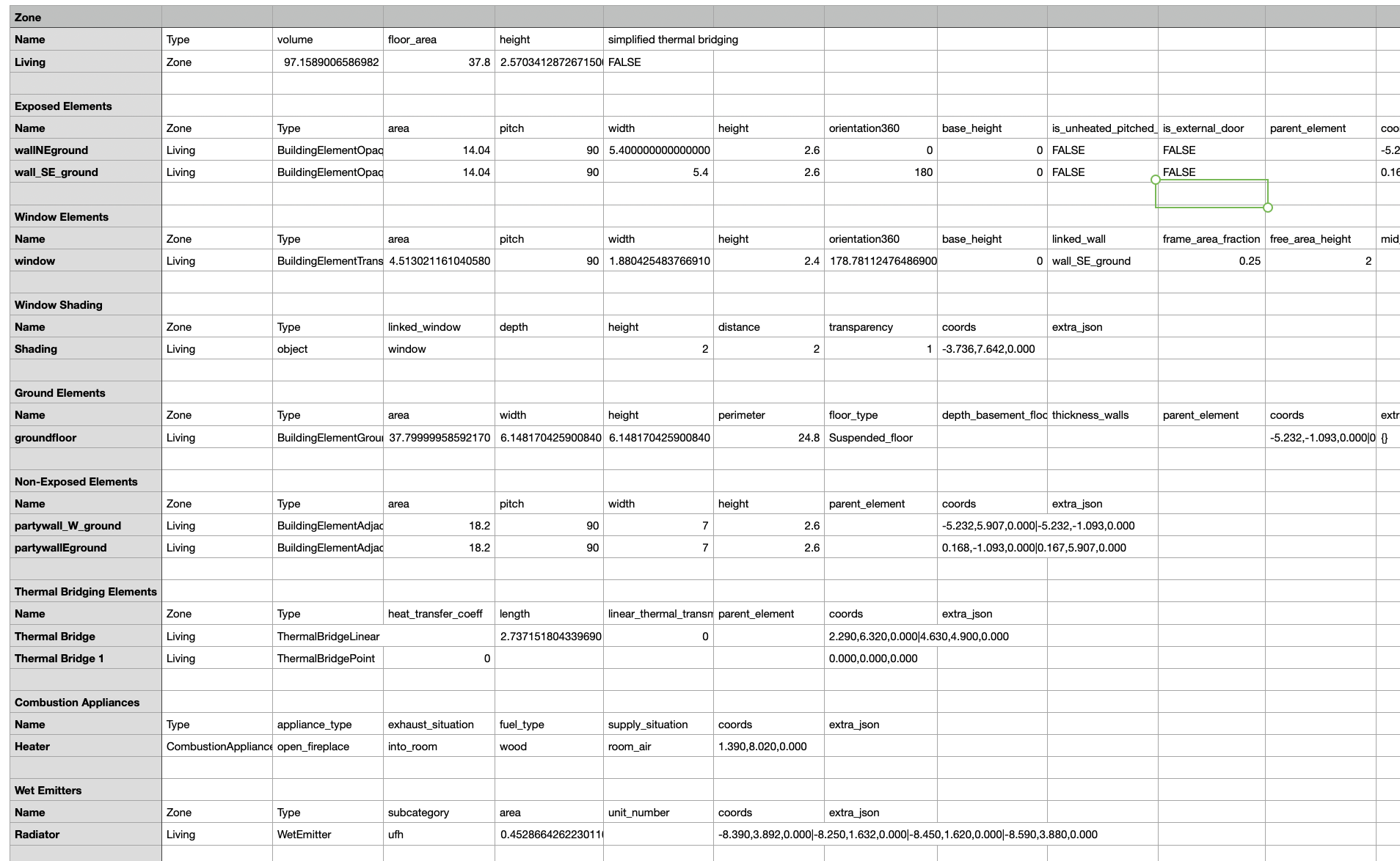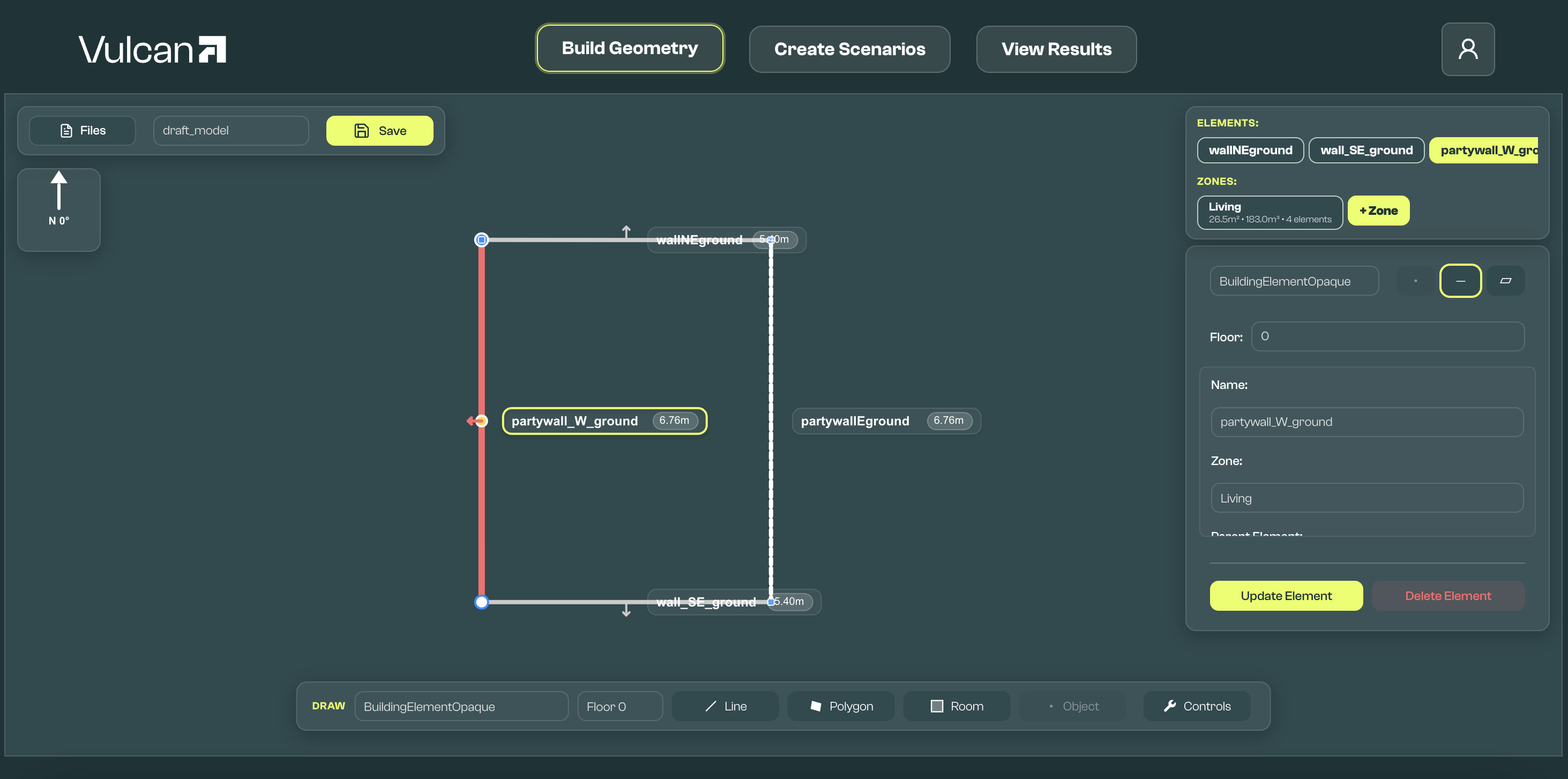Background
The first version of Vulcan launched at the start of 2024 as a simple web form that allowed users to create inputs for the Home Energy Model (HEM).
The first version filled a need. The HEM consultation (Dec 2023–Mar 2024) made this upcoming replacement to SAP 10 for domestic building energy modelling available with the Future Homes Standard wrapper. Given its compliance use case this wrapper fixed many inputs of HEM, limiting wider exploration and understanding.
We enabled users to explore these use cases and understand how HEM really worked, as well as keep track of HEM's evolution. This is because we believe HEM will only thrive if made open and accessible, and that its full value lies beyond simplified compliance models.
About a dozen energy assessor and design companies joined our early‑adopter programme. For a small monthly payment they received licences and regular updates, and they provided steady and highly valuable feedback. We also spoke with hundreds of assessors, installers, builders, architects, financiers, housebuilders, energy retailers, and parts of the UK government.
What HEM changes
We learned that HEM is a double‑edged sword:
- Strengths: Half‑hourly physics and open code enable more granular modelling of how homes perform. This supports better decisions on design, retrofit, solar, heat pumps, batteries, and tariffs. Central delivery means faster iteration than SAP.
- Costs: HEM is more complex than SAP. The larger, stricter input set adds time and cost. A minority have advanced workflows for portfolios or scenario modelling with SAP that are hard to maintain or transfer to HEM.
This is why we built Vulcan V2
Vulcan V2 has a fully redesigned and deeply opinionated User Experience. It is designed to address the challenges and opportunities of using HEM that we discovered from our first product.
V2 design principles
V2 delivers:
- Visual, interoperable inputs: for faster model creation with fewer errors
- Built for batch: to increase assessor value-add with minimal extra work
This article focuses on "visual, interoperable inputs", and we'll cover "built for batch" in a future article. We have other exciting features in the pipeline that we'll share in coming months.
Interoperable CSV inputs + visual editor
Problem: It is hard to create HEM inputs
HEM uses a large structured data (JSON) file for inputs. If any inputs are missing, it is not possible to run a HEM simulation. As a half‑hourly model, orientation and shading of every building element matter. HEM inputs also include raw physical properties such as wall thermal mass and solar absorptance. Many users struggle to access or verify all of these.
This prevented many users from completing inputs for a dwelling and running HEM.
Solution: V2 makes inputs easier in three ways
1. Local storage and compute
Vulcan V2 is accessible in modern browsers via a link. This means no software downloads, and ensures the version of Vulcan you use is always up to date.
Vulcan uses your own storage and compute. This means you can fully control data, runs, and automation. It also means no artificial caps on simulations.
Cloud storage and regulated outputs (Part L, EPC) will be optional, separate processes.
2. Simple CSV template
A simpler CSV captures geometry (shape and orientation of all elements) and essential services. This CSV is easy to audit or edit in Excel or Google Sheets.

Example of Vulcan CSV template
This template can be used in Vulcan with default thermal values to model a base building. Any previous HEM model can provide these default values, or an "archetype" dwelling can be used. All defaults can be easily understood and overridden. This enables both fast input creation alongside full control.
3. Visual floor-plan editor
Vulcan includes a floor‑plan editor that writes to our CSV template. This has a deliberately simple set of controls designed for energy modelling. This includes room drawing, snapping, undo/redo, mouse and keyboard controls, and a global compass. Dimensions and orientations can be either automatically calculated from the drawn floor plan, or directly edited.

Vulcan V2's visual floor-plan editor interface showing room-based energy modelling objects
Our most-requested feature is, perhaps unsurprisingly, inputs from other CAD programs or datasets. These integrations, plus other time saving features, are on our roadmap. Our own CAD interface will still be necessary to review imports and ensure accurate data, which is why we built this first.
We are still improving Vulcan's building data entry based on feedback. Our objective is faster data entry, fewer errors, and clearer reviews.
Start using HEM today
We have an exciting pipeline we're prioritising delivering to our early adopters. Early adopters can use Vulcan V2 now, get updates first, and secure a meaningful long-term discount. They also get a voice in the tooling they'll use to do their future work.
